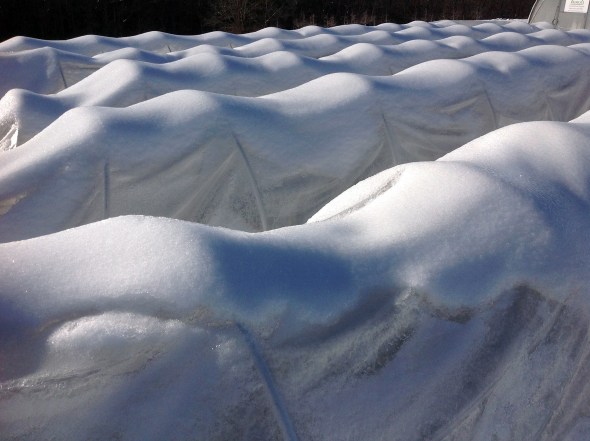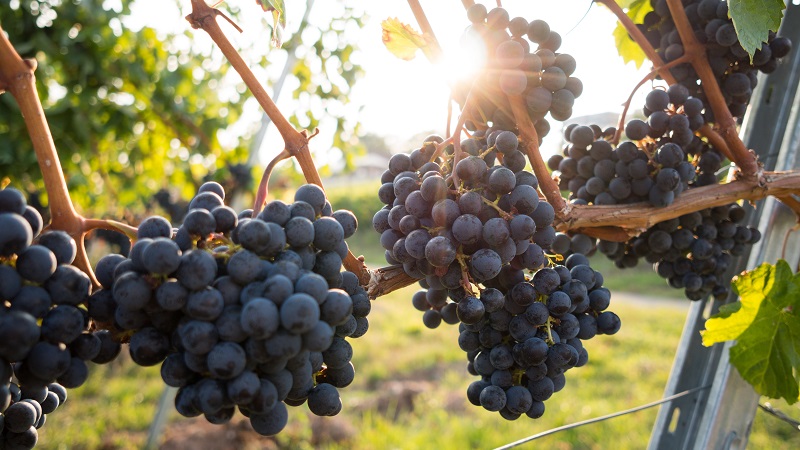Low Tunnels Aid In Overwintering Onions

It’s no secret that more growers in the Northeast are striving to get their vegetables to market as early as possible. Some are offering produce year-round.
To offer onions all year, some researchers in New Hampshire are experimenting with low tunnels. Funded by the New Hampshire Agricultural Experiment Station (NHAES) and Northeast SARE (Sustainable Agriculture Research and Education), the research may provide additional marketing opportunities for growers producing in the north.

Researchers in New Hampshire used low tunnels to overwinter onions, which may lead to additional marketing opportunities for growers.
Photos credit: Becky Sideman
Becky Sideman, NHAES faculty researcher, Extension professor of sustainable horticulture production at the University of New Hampshire (UNH), and her colleagues with the University of Massachusetts-Amherst, University of Massachusetts Extension, and UNH Cooperative Extension have been experimenting with low tunnels for the last couple of years. One of those experiments involved overwintering onions.
Sideman says the idea to overwinter onions in the structures came from a couple of places. She heard author and organic producer Eliot Coleman speak about the advantages of low tunnel use in Maine, and she visited vegetable farms in the area experimenting with the structures with varying degrees of success.
“The idea of using low tunnels was particularly appealing because in late winter and early spring it is a difficult time to find local food,” Sideman says. “The root cellars are running low, and greens are often the only thing ready in abundance. Growers told me that fresh onions with bright green tops moved quickly at the farmers’ markets, because they were something different.”
An Inexpensive Structure
Low tunnels proved to be good structures to overwinter the onions because they are inexpensive, can be easily installed over field space, and can be moved from year to year along with your crop rotation, she explains.
The researchers evaluated the survival, bolting, and bulbing of several cultivars of fall-planted onion at two locations in New Hampshire over two growing seasons. Sideman says the low tunnels were constructed using 10 feet of either metal EMT conduit or PVC pipe as bows. To bend the metal, the researchers used Johnny’s Selected Seeds low tunnel bender. The low tunnels were covered with a combination of a heavy (1.25 ounce/square yard) row cover early in the fall, plus 6-mil clear greenhouse plastic later in the fall.
Plants were seeded in August and September. Transplanting into raised beds covered with black plastic mulch took place in September and October. Low tunnels were positioned over the onion plants in late fall.
Sideman says during the late fall and winter they did not need to irrigate in the low tunnels. “We had installed drip irrigation lines, but didn’t need to use them because the soil is generally moist in the fall and winter. We did not apply any crop protectants on the onion crops. However, it’s worth noting that the low tunnels would make applying pesticides much more difficult.”
Onions were harvested from mid-May to early June 2012 and late May to early July 2013, and some varieties did better than others. From the research, Sideman says there were a few standouts including Bridger (Johnny’s Selected Seeds), Top Keeper and Keepsake (Territorial Seed Co.), and T-420 (American Takii).
The red varieties, in general, did not do as well as the yellow varieties that were evaluated because they had a tendency to bolt, and did not make quality bulbs. Sideman says she suspects the yellow varieties that did well had some tolerance to bolting and the red varieties trialed had less bolting tolerance. In the future, she will trial other red varieties to see if they will have some bolting resistance.
“We are doing quite a bit more work with more varieties, because I think the verdict is still out on which varieties will do best in this system,” she says.
From the study results, the earlier the onions were planted in the fall, the bigger the bulbs were in the spring. Sideman adds, though, that the percentage of plants that did not produce marketable bulbs was due to a higher incidence of bolting.
“All in all, it was better to plant a bit later, and have slightly smaller bulbs that did not bolt,” she explains. “Of course, the fall weather each year will be different, and it’s not predictable, so this makes it quite tricky to determine the best planting date.”
Surprising Results
According to Sideman, she didn’t expect to have such a high survival rate of onion plants — between 65% and 100% of the plants made it through the winter — even in Northern New Hampshire.
“The other thing that surprised me was the productive yields of onions that were grown in the open field in our site in northern New Hampshire,” she says. “Of course, we had excellent snow cover that year, and we could not count on this — so I would not recommend this practice, but it was surprising.”
To read more about Sideman and her colleagues’ research findings, check out the article “Production of Bulbing Onion Overwintered in New Hampshire with Protection by Low Tunnels” in the December 2014 issue of HortTechnology (http://horttech.ashspublications.org/).










